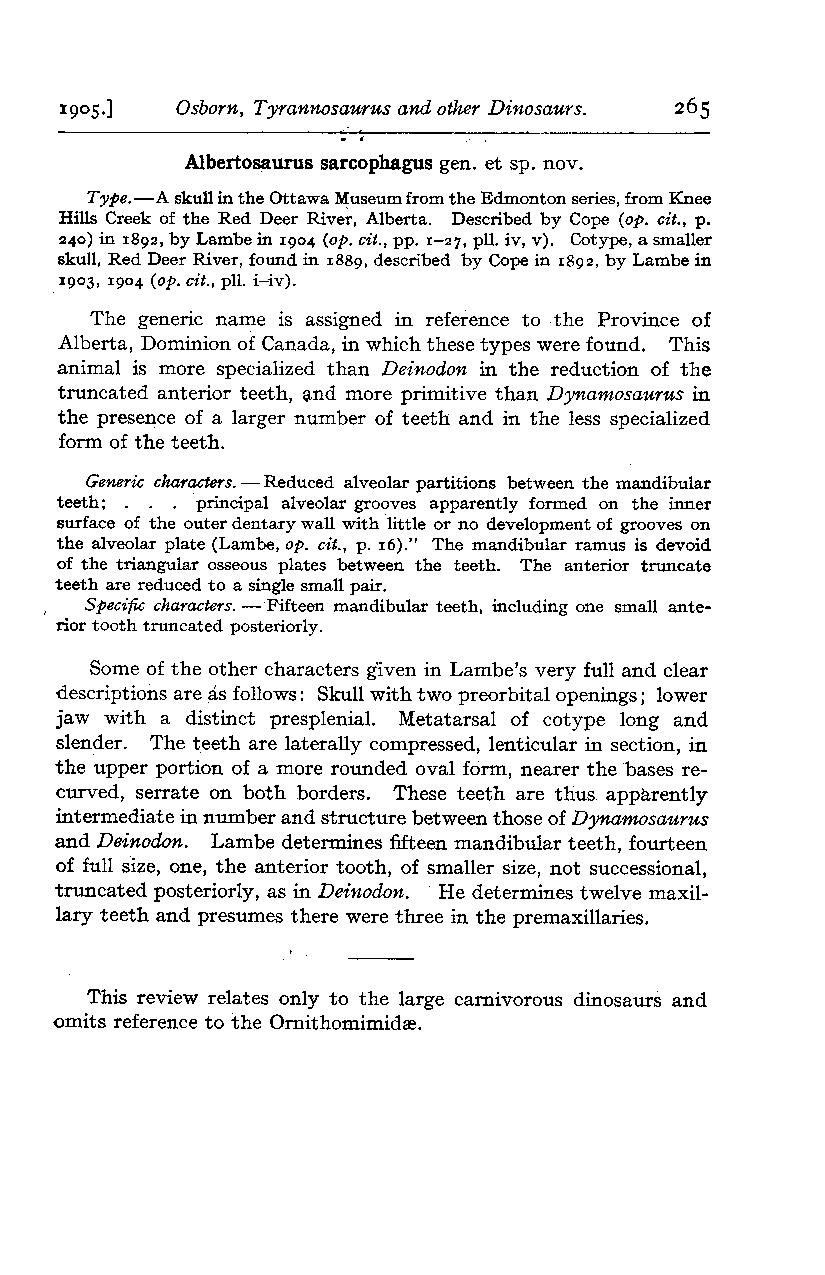Albertosaurus sarcophagus gen. et sp. nov.
Type.—A skull in the Ottawa Museum from the Edmonton series, from Knee Hills Creek of the Red Deer River, Alberta. Described by Cope (op. cit., p. 240) in 1892, by Lambe in 1904 (op. cit., pp. 1-27, pll. iv, v). Cotype, a smaller skull, Red Deer River, found in 1889, described by Cope in 1892, by Lambe in 1903, 1904 (op. cit., pll. i-iv).
The generic name is assigned in reference to the Province of Alberta, Dominion of Canada, in which these types were found. This animal is more specialized than Deinodon in the reduction of the truncated anterior teeth, and more primitive than Dynamosaurus in the presence of a larger number of teeth and in the less specialized form of the teeth.
Generic characters.— Reduced alveolar partitions between the mandibular teeth; . . . principal alveolar grooves apparently formed on the inner surface of the outer dentary wall with little or no development of grooves on the alveolar plate (Lambe, op. cit., p. 16)." The mandibular ramus is devoid of the triangular osseous plates between the teeth. The anterior truncate teeth are reduced to a single small pair.
Specific characters.—Fifteen mandibular teeth, including one small anterior tooth truncated posteriorly.
Some of the other characters given in Lambe's very full and clear descriptions are as follows: Skull with two preorbital openings; lower jaw with a distinct presplenial. Metatarsal of cotype long and slender. The teeth are laterally compressed, lenticular in section, in the upper portion of a more rounded oval form, nearer the bases recurved, serrate on both borders. These teeth are thus apparently intermediate in number and structure between those of Dynamosaurus and Deinodon. Lambe determines fifteen mandibular teeth, fourteen of full size, one, the anterior tooth, of smaller size, not successional, truncated posteriorly, as in Deinodon. He determines twelve maxillary teeth and presumes there were three in the premaxillaries.
This review relates only to the large carnivorous dinosaurs and omits reference to the Ornithomimidæ.
